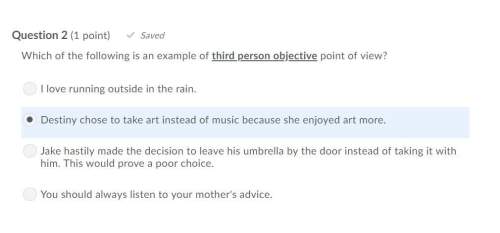
Read the excerpt from a letter about the Minidoka Relocation Center. It was written by Japanese American Kenji Okuda, who was relocated during World War II. Which two statements represent the central idea of the passage?
The camp is still very far from completed. They had to interrupt movement for a week because of lack of housing facilities—in fact the last group of 500 which left had to sleep in mess halls, laundry rooms, and any available bed space. The W. R.A. officials were trying hard enough to have the Army stop the wholesale movement—but the Army waited until they were absolutely certain that the camp over there could hold no more. There are about 4,500 there now—and no running hot water as of the latest reports. The sewage and lavatory facilities are still uncompleted—residents are using outhouses until all construction is completed. The dust out there in the midst of the Minidoka desert, the sagebrush and bugs, must be terrific. Most of the people there suffer from sore throats, and dust storms are terrific—can’t see more than a couple of feet ahead. Many of the residents get nosebleeds—the fine sand seems to wreak havoc with almost everything. It is entirely possible that if we are there long enough and get water on the soil, we will be able to make a veritable “Garden of Eden.” The first two years will be hard—how many will be able to live through it and come through triumphant?
Housing facilities at Minidoka were inadequate because the camp was overcrowded.
The US Army and the War Relocation Authority disagreed over the number of evacuees to be moved into the camp.
People in the Minidoka Relocation Center did not even have a place to sleep.
Living conditions in the Minidoka relocation camp were poor and unhealthy.
It was possible to convert the arid Minidoka desert into a fertile farmland.

Answers: 3


Another question on English

English, 22.06.2019 01:50
Plagiarism quiz read both the paragraph below and the information following it that identifies the source using the american psychological association format. then read each of the numbered statements and determine if each is plagiarized or not. circle “yes” if the statement is plagiarized, “no” if it is not, and then fix the “yes” answers). original source the presence of the taiwanese on everest was a matter of grave concern to most of the other expeditions on the mountain. there was a very real fear that the taiwanese would suffer a calamity that would compel other expeditions to come to their aid, risking further lives, to say nothing of jeopardizing the opportunity for other climbers to reach the summit. but the taiwanese were by no means the only group that seemed egregiously unqualified. camped beside us at base camp was a twenty-five-year-old norwegian climber named peter neby, who announced his intention to make a solo ascent of the southwest face, one of the peak’s most dangerous and technically demanding routes—despite the fact that his himalayan experience was limited to two ascents of neighboring island peak, a 20,274-foot bump that required little more than vigorous walking. krakauer, j. (1998). into thin air: a personal account of the mount everest disaster. new york: anchor books, 122 - 3. student samples yes 1. there was a very real fear that the taiwanese would suffer a calamity that would compel other expeditions to come to their aid(krakauer, 1998). no) 2. many climbers overestimate their abilities, as krakauer (1998) explains when he writes of peter neby, whose himalayan experience in the past “required little more than vigorous walking” (122 - 3). no 3. jon krakauer (1998) discusses other concerns besides those of unpredictable weather and his own climbing group’s capabilities. for example the existence of a taiwanese group on everest was a matter of serious unease to most everyone else on the mountain. yes/no 4. krakauer (1998) states that the taiwanese group was not the only inexpert climbers to attempt mt. everest: camped beside us at base camp was a twenty-five-year-old norwegian climber named peter neby. . [whose] himalayan experience was limited to two ascents of neighboring island peak, a 20,274-foot bump that required little more than vigorous walking (122 – 3). yes/no 5. the author asserts that the taiwanese “were by no means the only group that seemed egregiously unqualified.” yes/no 6. in his book into thin air, jon krakauer (1998) discusses many of the dangers he noted prior to his disastrous attempt to climb mt. everest in 1996. among them were encounters with other groups and individual climbers who were ill-trained and ill-equipped to handle the demands of such a climb.
Answers: 2

English, 22.06.2019 03:00
Which word best describes the tone of "will we ever grow organs? "
Answers: 1

English, 22.06.2019 05:00
What statements best describes king's purpose in writing the letter?
Answers: 1

You know the right answer?
Read the excerpt from a letter about the Minidoka Relocation Center. It was written by Japanese Amer...
Questions

Mathematics, 18.01.2022 04:30


Chemistry, 18.01.2022 04:30



Mathematics, 18.01.2022 04:30

History, 18.01.2022 04:30

English, 18.01.2022 04:30

Mathematics, 18.01.2022 04:30


Social Studies, 18.01.2022 04:30


Mathematics, 18.01.2022 04:30




Computers and Technology, 18.01.2022 04:30

Mathematics, 18.01.2022 04:30





